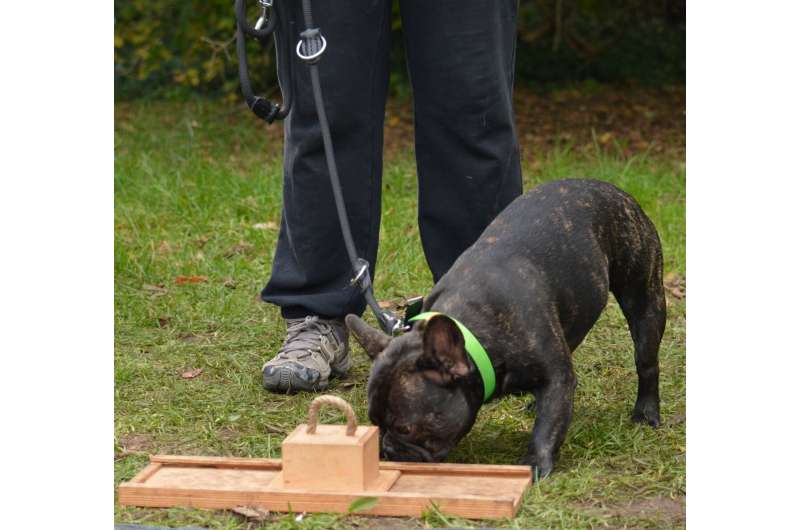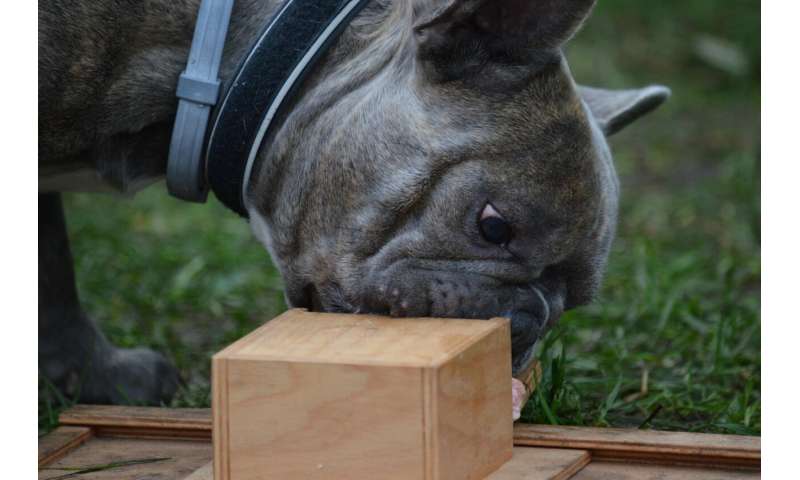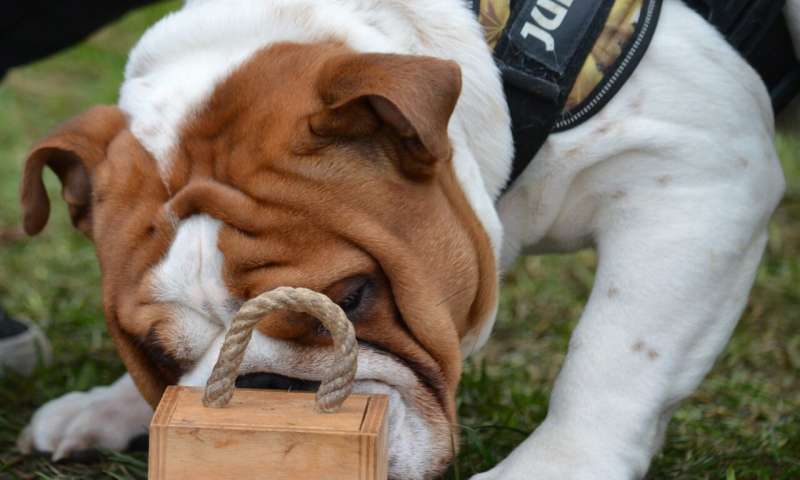Why flat-faced dogs seem more cuddly than longer-muzzled dogs

A team of ethologists, natural scientists and psychologists affiliated with several institutions in Hungary has found evidence suggesting that some of the attraction by humans to flat-faced dogs can be tied to their stronger reliance on being helped than other dog breeds. In a study reported in the journal Scientific Reports, the group conducted experiments with two flat-faced breeds, comparing them with non-flat faced breeds, as they engaged in a task.
Prior research has shown that flat-faced dog breeds have grown in popularity over the past several years—they are now the most popular breed category in the United States. Their popularity appears to fly in the face of logic—flat-faced dogs are known to have breathing problems, are at higher risk of heat stroke, are more likely to develop eye trouble and do not live very long.
Some prior research has suggested that the popularity of such breeds is due to their cuteness, specifically their faces. Many have suggested they have attributes that remind us of babies. In this new effort, the research team wondered if other factors might be involved as well. To find out, they conducted an experiment comparing two flat-faced breeds—French and English bulldogs—with a mid-length muzzle breed—Hungarian mudis.


The researchers enlisted the assistance of 15 French bulldogs, 15 English bulldogs and 13 mudis and their owners. The experiment consisted of allowing a dog to watch as a researcher put a treat inside of a wooden box and then closed it, then allowing the dog to try to open the box to get the treat. The team used three types of boxes of differing degrees of difficulty. As the dogs were attempting to open the box, the owners stood behind them.
The research team found that mudis were approximately 93% better at opening the box. But more interesting was that the flat-faced dogs were 4.5 times more likely to turn around to look to their owners for assistance than the mudis. The researchers suggest such behavior makes them seem more in need of aid, likely making them appear even more like helpless babies and thus more attractive to owners.
More information: Dorottya Júlia Ujfalussy et al, The difference between two brachycephalic and one mesocephalic dog breeds' problem-solving performance suggests evidence for paedomorphism in behaviour, Scientific Reports (2023). DOI: 10.1038/s41598-023-41229-8
Journal information: Scientific Reports
2023 Science X Network
No comments:
Post a Comment